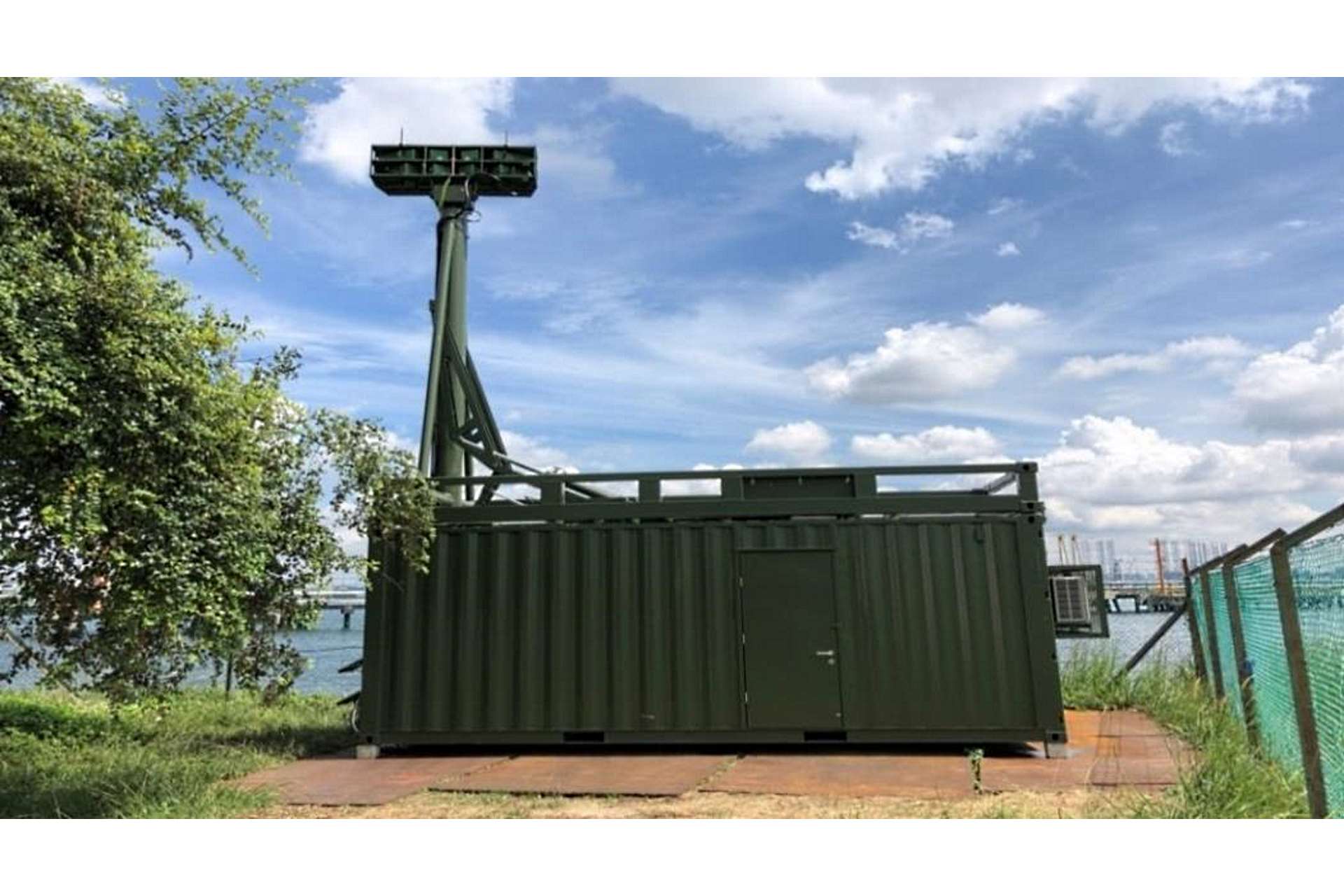 Figure 1: Unmanned Watch Tower
Figure 1: Unmanned Watch Tower
 Fact Sheet: Unmanned Watch Towers - Enhancing the SAF's Protection of Installation Operations
Fact Sheet: Unmanned Watch Towers - Enhancing the SAF's Protection of Installation Operations
 Figure 1: Unmanned Watch Tower
Figure 1: Unmanned Watch Tower
SAF's Protection of Installation (POI) Operations. Since 2001, the Singapore Armed Forces (SAF) has been conducting security operations at key installations such as Changi Airport, Jurong Island and Sembawang Wharves to boost Singapore's vigilance and defence against the threat of terrorism. As part of the SAF's efforts to respond swiftly to security threats, the SAF performs coastal surveillance at Jurong Island to detect any intrusion from the sea through the deployment of servicemen on observation towers located on the Island.
Unmanned Watch Tower. The Unmanned Watch Tower (UWT) (as shown in Figure 1 above) will be introduced to enhance the SAF's POI operations. The UWT will enhance the SAF's coastal surveillance capabilities at Jurong Island in both day and night conditions whilst optimising manpower resources. To support 24/7 coastal surveillance operations, engineers from the Defence Science and Technology Agency integrated the various surveillance and sensor feeds such that they can be monitored remotely at the command centre. Additionally, the DSO National Laboratories designed and built the UWT with the video analytics for target detection. The first UWT is expected to be operational by March 2018, and two additional systems will be deployed by September 2018. Being a redeployable system, the UWT can be deployed anywhere on-demand to enhance the SAF's surveillance capability for homeland security operations.
a. Increased Operational Effectiveness. Coastal surveillance operations from the observation towers can be challenging for servicemen due to the wide area of coverage for coastal surveillance and the low ambient light conditions in the night as well as during the day-night transition. With the introduction of advanced sensor systems in the UWT, the SAF is able to overcome these challenges. The advanced sensor systems comprise multiple high-resolution low-light Electro-Optical Cameras to cover a wide surveillance area, centralised remote monitoring of multiple camera systems, and video analytics for the automatic detection of targets. The UWT is also equipped with a long-range acoustic device to warn off intruders. These enhanced capabilities will enable the SAF to conduct surveillance operations more effectively and efficiently.
b. Optimised Manpower Resources. The UWT will also enable the reduction of the number of soldiers required for POI operations at Jurong Island by up to 30%. Additionally, the technology and automation fielded in the UWT allows servicemen who were previously not suited to be Security Troopers, to now be eligible to be deployed as Security Troopers for homeland security operations at Jurong Island.
c. Close Integration with Relevant Agencies. The SAF works closely with relevant agencies such as the Police Coast Guard (PCG) to conduct coastal surveillance operations to ensure the security of key installations such as Jurong Island. The SAF shares information provided by the UWT system, such as the position, course and speed of the potential threats, with the PCG to enhance joint coordination efforts between both agencies.
- Speech by Minister for Defence Dr Ng Eng Hen at the Ministry of Defence Committee of Supply Debate 2018
- Fact Sheet: Enhancing Training for Homeland Security Operations
- Fact Sheet: SAF's Participation in the Defeat-ISIS Coalition
- Fact Sheet: The Republic of Singapore Air Force's Smart Airbase of the Future
- Fact Sheet: Smart Defence Initiatives by the Republic of Singapore Navy
